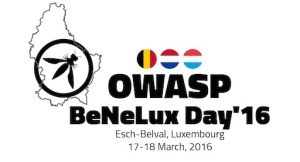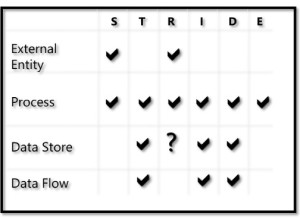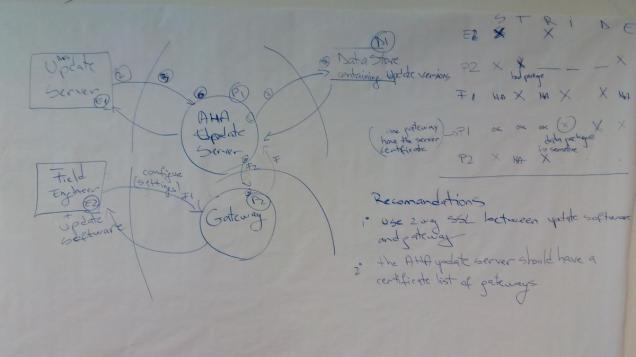Here are my quick notes from the OWASP BeNeLux Days 2016 conference day. All the slides can be found on this page.
Gamers, You’re the new Botnets
This presentation was about  how to educate the teenagers to be aware of the dangers installing cracked video games.
how to educate the teenagers to be aware of the dangers installing cracked video games.
The first part of the presentation was an practical example of what a system containing cracked video games is doing in background:the system was connected to external IP addresses from different countries, various ports were open to the target machine, even an cloud hard drive data backup software it was silently operating.
The second part of the presentation was about a process that could be applied in order to reduce the risk of transforming the pc in a botnet client. This process implied:
- the use of an intermediary pc on which a scan of the downloaded games could be done.
- a virtual machine on which the Wireshark is installed. On this VM, the game could be eventually installed.
Top 10 privacy risks in web applications
The goal of this presentation was to present the OWASP Top 10 Privacy Risks Project which have as goal to identify the most important technical and organizational privacy risks for web applications and to propose some mitigations techniques.
The top 10 privacy risks:
- Web Application Vulnerabilities
- Operator-sided Data Leakage
- Insufficient Data Breach Response
- Insufficient Deletion of personal data
- Non-transparent Policies, Terms and Conditions
- Collection of data not required for the primary purpose
- Sharing of data with third party
- Outdated personal data
- Missing or Insufficient Session Expiration
- Insecure Data Transfer
LangSec meets State Machines
For me this presentation contained two separate and independent tracks.
The first track was around LANGSEC: Language-theoretic Security The LangSec idea (which sounds very appealing) is to treat all inputs of an applcation (valid or invalid) as a formal language. In this case then the input validation would be done using a a recognizer for that language.
LangSec principle: no more handwriter parsers but:
- precisely defined input languages
- generated parsers
- complete parsing before processing
- keep the input language simple & clear
The second track was around the use of state diagrams in order to detect security flows in different protocols (GSM, SSH). Lot of protocols have states and it is possible to compute the state machine of a protocol using a black box testing approach.
The Tales of a Bug Bounty Hunter
The author is participating to the Facebook Bug Bounty Program and the presentation was about the different security vulnerabilities found in the Instagram application. For each vulnerability, a detailed description was made.
The most surprising fact was that the impact of the vulnerabilities found was not at all linked to the time/effort spent to find the vulnerabilities :).
OWASP Secure Knowledge Framework (SKF)
The OWASP SKF is intended to be a tool that is used as a guide for building and verifying secure software.
The 4 Core usage of SKF:
- Security Requirements using OWASP Application Security Verification Standard (ASVS) for development and for third party vendor applications.
- Security knowledge reference (Code examples/ Knowledge Base items) in PHP and C# (not yet in Java)
- Security as part of design with the pre-development functionality. The developer can choose the type of functionality taht he wants to implement and SKF will make a reports with all the security hints/infos that he should be aware.
- Security post-development functionality for verification with the OWASP ASVS
The application is an web application and can be runned on local systems of developers or on a server.
Challenges in Android Malware Detection
A traditional way of malware detection:
- collect suspicious samples
- analyze the samples (usually manually)
- extract the signature
A smarter solution could be that given a set of known malwares + known goodwares + use data mining techniques to detect unknown samples.
The main problem of this approach is that :
- there are a few small sets of known malwares
- there are no set of known goodwares
The conclusion is that is very difficult to build the wright set of malwares and goodwares so there is not possible to have an automatic malware detection process.
Serial Killer: Silently Pwning your Java Endpoints
This presentation is about the Java deserialization vulnerability. Tha authors explains how the vulnerability works, what products/frameworks are affected and also what are the possible mitigations. The best mitigations is to not use at all the serialization/deserialization process and/or replace it by JSON or XML.
The slides of this presentation can be found here.


You must be logged in to post a comment.